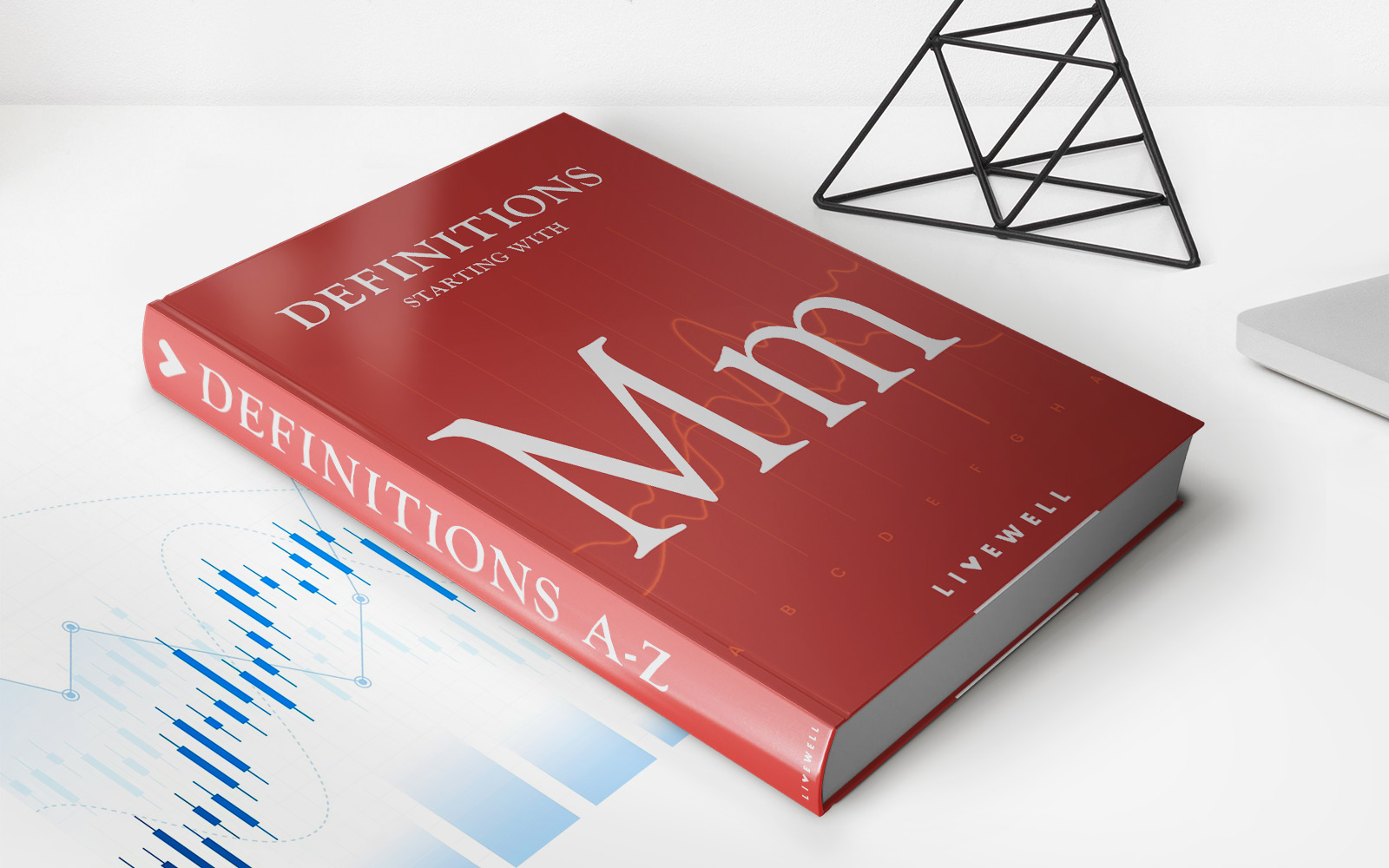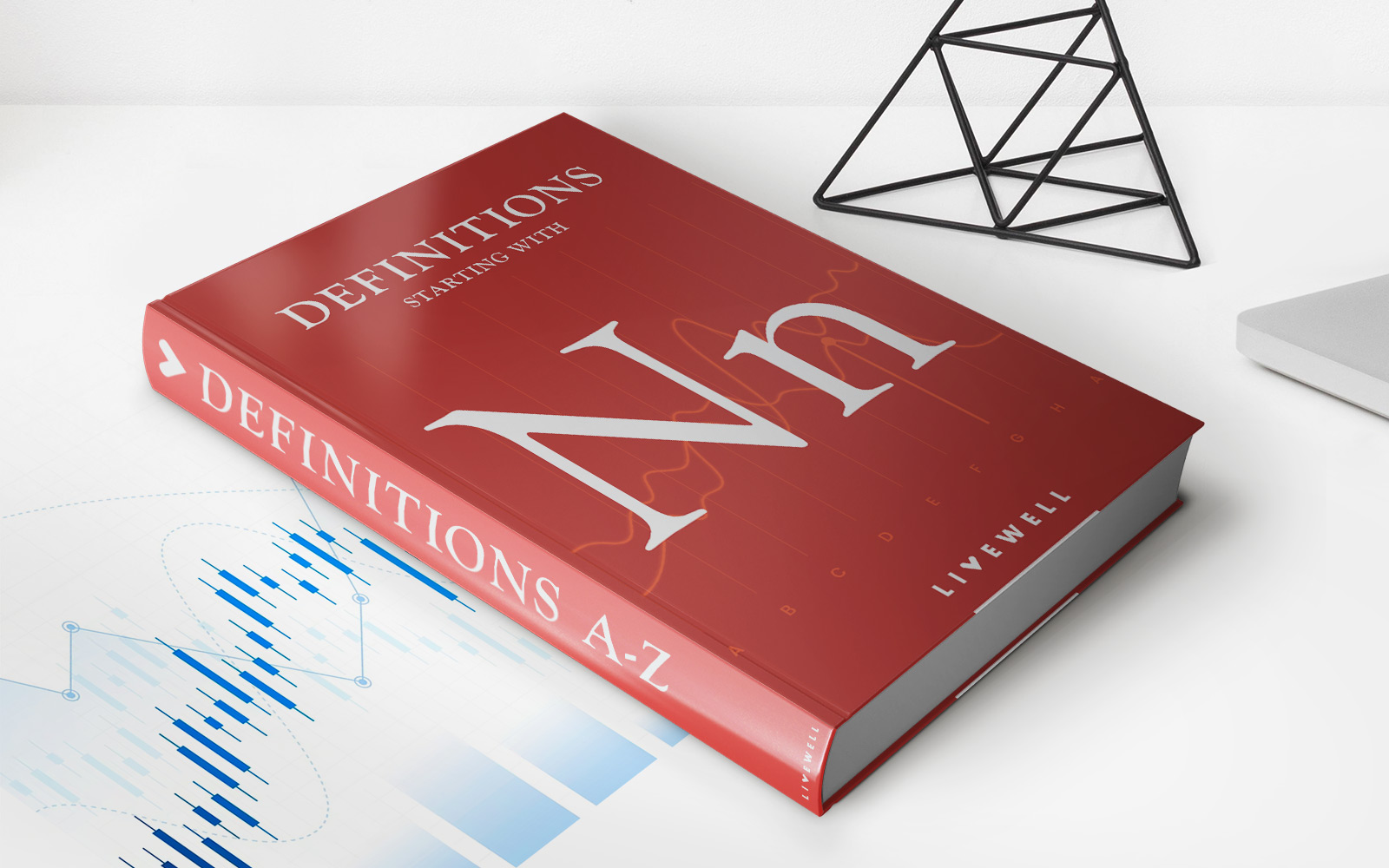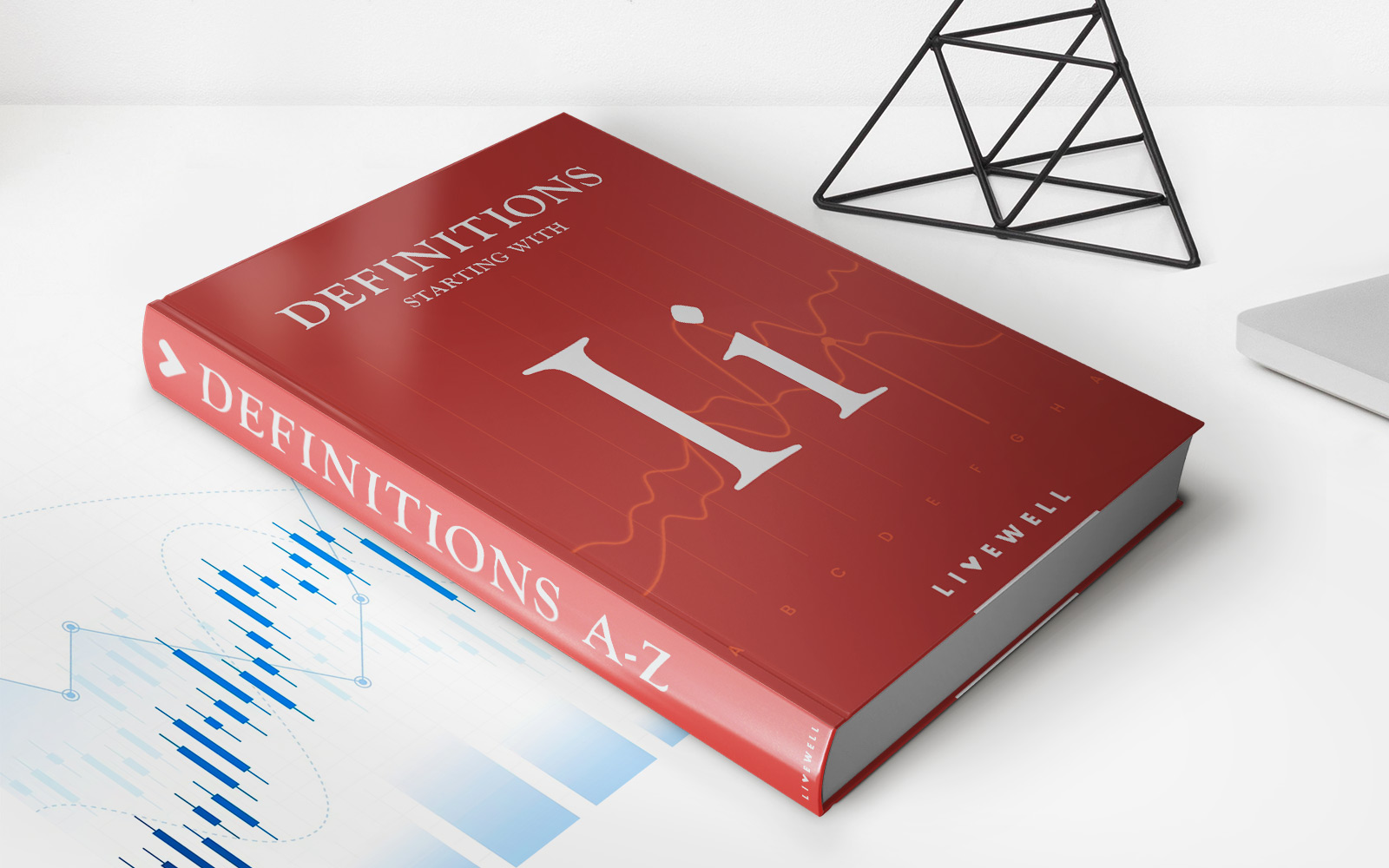

Finance
How To Deal With Inflation In A Business
Published: October 19, 2023
Learn effective strategies to tackle inflation in your business and ensure financial stability. Gain insights on managing finances in times of economic inflation. #Finance #Inflation #Business
(Many of the links in this article redirect to a specific reviewed product. Your purchase of these products through affiliate links helps to generate commission for LiveWell, at no extra cost. Learn more)
Table of Contents
- Introduction
- Understanding Inflation in Business
- Impact of Inflation on Business
- Strategies to Deal with Inflation
- Pricing Strategies
- Cost Management Techniques
- Supply Chain Optimization
- Diversification of Product or Service Offerings
- Negotiating Better Deals with Suppliers
- Effective Inventory Management
- Investing in Long-term Assets
- Evaluating and Adjusting Business Models
- Conclusion
Introduction
Inflation is a common phenomenon in the business world. It refers to the general increase in prices of goods and services over time. While inflation is a natural part of the economy, it can have a significant impact on businesses, affecting their profitability, competitiveness, and overall stability.
Effectively dealing with inflation is crucial for businesses to stay afloat and thrive in a constantly changing economic landscape. This article will provide insights into understanding inflation in the context of business and highlight strategies that businesses can employ to navigate and mitigate its effects.
It is important for business owners and entrepreneurs to understand the various factors that contribute to inflation. These factors can include government policies, changes in supply and demand dynamics, fluctuations in currency values, and changes in production costs. By understanding these factors, businesses can anticipate and prepare for potential inflationary impacts.
Inflation affects businesses in multiple ways. One of the most immediate impacts is the rising cost of inputs, such as raw materials, energy, labor, and other operating expenses. This can squeeze profit margins, especially if businesses are unable to pass on these increased costs to customers through price adjustments.
Additionally, inflation can also impact consumer spending patterns. When prices rise, consumers tend to have less disposable income, which can lead to reduced demand for goods and services. This can be particularly challenging for businesses in sectors that rely heavily on consumer spending.
Inflation can also pose challenges for businesses in terms of financial planning and forecasting. Unpredictable inflation rates can make it difficult to accurately estimate future expenses and revenues, making it harder to make informed business decisions.
These challenges, however, do not mean businesses are helpless in the face of inflation. By adopting appropriate strategies, they can minimize the negative impact and even turn inflation into an opportunity for growth.
Understanding Inflation in Business
In order to effectively deal with inflation in business, it is important to have a clear understanding of what inflation is and how it affects the economy.
Inflation is the sustained increase in the general price level of goods and services over a period of time. When inflation occurs, the purchasing power of money decreases, as it requires more money to buy the same goods and services.
Inflation can be caused by a variety of factors, including increased demand, limited supply, changes in production costs, and government policies. When demand for goods and services exceeds the available supply, prices tend to rise. Similarly, if the cost of inputs, such as labor, raw materials, and energy, increases, businesses may pass on these costs to consumers in the form of higher prices.
Inflation can have both positive and negative effects on businesses. On one hand, moderate levels of inflation can stimulate economic growth by encouraging consumer spending and investment. It can also help businesses increase their revenues and profits. On the other hand, high levels of inflation can lead to uncertainty, reduced consumer purchasing power, and increased operating costs, which can negatively impact business profitability.
It is important for businesses to monitor inflation rates and understand the specific factors driving inflation in their industry. This can help them anticipate and prepare for potential impacts on their operations, pricing strategies, and financial planning.
Measuring inflation is usually done using the Consumer Price Index (CPI), which tracks changes in the prices of a basket of goods and services that are representative of a typical consumer’s spending habits. By analyzing CPI data, businesses can gain insights into the general level of inflation in the economy and make informed decisions about pricing, budgeting, and forecasting.
Furthermore, businesses should also consider the inflationary expectations of consumers and investors. If consumers and investors anticipate future inflation, they may adjust their spending and investment patterns, which can have a direct impact on businesses. Therefore, understanding and managing inflationary expectations is crucial for business success.
Overall, a comprehensive understanding of inflation in business involves monitoring inflation rates, analyzing the underlying factors driving inflation, and considering the inflationary expectations of consumers and investors. Armed with this knowledge, businesses can develop effective strategies to navigate and mitigate the impacts of inflation.
Impact of Inflation on Business
Inflation can have a significant impact on businesses across various sectors. Understanding these impacts is essential for businesses to proactively adapt and mitigate the challenges posed by inflation. Here are some key ways in which inflation can affect businesses:
1. Pricing Pressure: Inflation often leads to an increase in the cost of inputs such as raw materials, labor, and operating expenses. This puts pressure on businesses to raise their prices in order to maintain profit margins. However, increasing prices can also impact customer demand and competitiveness, requiring businesses to find a balance between maintaining profitability and retaining customers.
2. Reduced Consumer Purchasing Power: When inflation occurs, the value of money decreases, resulting in reduced purchasing power for consumers. This can lead to a decrease in demand for discretionary goods and services as consumers cut back on spending. Businesses that rely heavily on consumer spending may experience a decline in sales and revenue as a result.
3. Increased Cost of Borrowing: Inflation can cause interest rates to rise, making it costlier for businesses to borrow money. This can impact investment decisions and hinder the growth and expansion plans of businesses that rely on external financing.
4. Impact on Wages: Inflation can also affect wages and labor costs. As the cost of living increases, employees may demand higher wages to maintain their purchasing power. This can result in increased labor costs for businesses, further squeezing profit margins.
5. Uncertain Financial Planning: Inflation can make financial planning and budgeting more challenging for businesses. Fluctuating prices and unpredictable inflation rates can make it difficult to estimate future expenses and revenues accurately. This uncertainty may hinder the ability of businesses to make informed decisions and can lead to financial instability.
6. Supply Chain Disruptions: Inflation can disrupt supply chains as businesses face challenges in securing raw materials and components at stable prices. Suppliers may pass on increased costs, leading to difficulties in maintaining consistent product quality and availability. Businesses may need to explore alternative suppliers or adjust their supply chain strategies to mitigate these disruptions.
7. Competitive Landscape: Inflation can reshape the competitive landscape as businesses across industries face similar challenges. This can result in increased competition for resources and market share, requiring businesses to differentiate themselves and adapt their strategies to remain competitive.
While inflation poses challenges for businesses, it is important to note that it can also create opportunities. Businesses that can effectively manage their costs, anticipate customer needs, and adapt their pricing strategies may be able to thrive even in an inflationary environment.
By understanding the impact of inflation on their specific industry and taking proactive measures to mitigate its effects, businesses can position themselves for long-term success and stability despite the challenges posed by inflation.
Strategies to Deal with Inflation
Inflation can pose significant challenges for businesses, but there are strategies that can help mitigate its effects and maintain stability. Here are some effective strategies to deal with inflation:
1. Pricing Strategies: Implementing smart pricing strategies can help businesses maintain profit margins while remaining competitive. This can include selectively increasing prices for certain products or services that are less price-sensitive, offering bundled pricing, or providing value-added benefits to justify price increases.
2. Cost Management Techniques: Businesses can adopt cost-saving measures to mitigate the impact of increased expenses. Analyzing and optimizing operational costs, negotiating better deals with suppliers, and implementing energy-saving initiatives are some ways businesses can control costs and maintain profitability.
3. Supply Chain Optimization: Strengthening and optimizing the supply chain can help minimize the impact of inflation. Evaluating alternative suppliers, negotiating long-term contracts to secure stable pricing, and implementing efficient inventory management practices can ensure a steady supply of materials and minimize disruptions.
4. Diversification of Product or Service Offerings: By diversifying the product or service offerings, businesses can spread their risks and decrease dependence on specific sectors that may be heavily affected by inflation. This can involve expanding into complementary markets or introducing new products or services to cater to changing customer needs.
5. Negotiating Better Deals with Suppliers: Building strong relationships with suppliers and negotiating favorable terms can help businesses secure stable pricing amid inflationary pressures. Collaboration and open communication with suppliers can result in mutually beneficial agreements that help mitigate the impact of rising costs.
6. Effective Inventory Management: Efficient inventory management practices, such as just-in-time (JIT) inventory systems, can help businesses reduce carrying costs and minimize the risk of holding excess inventory. This can free up working capital and help businesses respond quickly to changes in pricing and demand.
7. Investing in Long-term Assets: Inflation can lead to the depreciation of the value of money, making investments in long-term assets a viable strategy. Investing in infrastructure, technology upgrades, or other long-term assets can provide businesses with a hedge against inflation and enhance their competitive capabilities.
8. Evaluating and Adjusting Business Models: Inflation may require businesses to re-evaluate their business models and make necessary adjustments. This can involve identifying new revenue streams, exploring cost-sharing partnerships, or finding innovative ways to deliver value to customers while keeping costs in check.
It is crucial for businesses to constantly monitor market conditions, stay informed about inflationary trends, and adapt their strategies accordingly. By taking a proactive and flexible approach, businesses can navigate the challenges presented by inflation and position themselves for long-term success.
Pricing Strategies
Pricing strategies play a crucial role in helping businesses navigate the challenges posed by inflation. By implementing effective pricing strategies, businesses can maintain profitability and competitiveness despite increasing costs. Here are some key pricing strategies to consider:
a. Value-Based Pricing: Instead of simply increasing prices across the board, businesses can focus on the value they provide to customers. By highlighting the unique features, benefits, and quality of their products or services, businesses can justify higher prices and maintain customers’ perception of value.
b. Dynamic Pricing: Inflation can result in fluctuating costs, making it necessary for businesses to adjust prices accordingly. Dynamic pricing involves setting prices based on real-time market conditions, demand, and supply. By leveraging technology and data analytics, businesses can optimize their pricing strategies and maximize revenue.
c. Price Bundling: Another effective pricing strategy is bundling products or services together to offer customers a package deal. This not only enhances customer value but also allows businesses to align price increases with increased value perception. By bundling complementary items, businesses can ensure a higher perceived value and mitigate the impact of individual price increases.
d. Price Differentiation: Inflation affects various customer segments differently. Businesses can leverage this by implementing price differentiation strategies. This can involve offering different pricing tiers based on customer segment, such as premium pricing for exclusive products or services and discounted pricing for price-sensitive customers.
e. Promotional Pricing: During periods of inflation, businesses can use promotional pricing strategies to stimulate customer demand. Limited-time offers, discounts, loyalty programs, and bundling promotions can incentivize customers to make purchases while maintaining profitability through increased sales volume.
f. Cost-Plus Pricing: Cost-plus pricing involves setting prices based on a predetermined profit margin above the cost of production. As inflation pushes up production costs, businesses can adjust their pricing formulas to ensure an adequate profit margin is maintained. This approach provides transparency to customers and helps businesses cover their increased expenses.
g. Monitor Competitor Pricing: Keeping an eye on competitor pricing is essential during inflationary periods. While businesses must maintain their own cost structures, monitoring how competitors adjust their prices can provide insights. By monitoring competitors’ pricing strategies, businesses can ensure their prices remain competitive without sacrificing profitability.
h. Communicate Value to Customers: Effective communication is key when implementing pricing strategies during inflationary periods. Clearly explaining the reasons behind price adjustments, such as increased costs due to inflation, can help customers understand the need for price changes and maintain their trust and loyalty.
It is important for businesses to regularly assess their pricing strategies, monitor market conditions, and make necessary adjustments to navigate the challenges of inflation. By implementing the right pricing strategies, businesses can maintain profitability, meet customer expectations, and remain competitive in an ever-changing economic landscape.
Cost Management Techniques
Cost management techniques are essential for businesses to effectively deal with inflation. By analyzing and optimizing their expenses, businesses can mitigate the impact of rising costs and maintain profitability. Here are some key cost management techniques to consider:
a. Conduct a Cost Audit: Start by conducting a thorough audit of your business’s expenses. Identify areas where costs can be reduced or optimized, such as analyzing supplier contracts, identifying wasteful expenditures, and reviewing operational processes.
b. Negotiate Better Deals with Suppliers: In an inflationary environment, it is crucial to negotiate favorable terms with suppliers. Explore opportunities for volume discounts, longer payment terms, or bulk purchasing to secure stable pricing. Building strong relationships with suppliers can also lead to preferential treatment and better pricing agreements.
c. Implement Energy-Saving Initiatives: Rising energy costs can significantly impact businesses. Implement energy-saving practices, such as using energy-efficient equipment, optimizing lighting and heating systems, and encouraging employees to adopt energy-conscious behavior. These initiatives can help reduce utility expenses and lower overall operating costs.
d. Leverage Technology: Investing in technology can streamline operations and reduce costs. Automation, digitalization, and cloud-based solutions can improve efficiency, reduce manual labor costs, and minimize the risk of errors. Technology can also provide data analytics tools to identify cost-saving opportunities and optimize resource allocation.
e. Review and Optimize Overhead Expenses: Scrutinize overhead expenses to find areas for optimization. Review subscriptions, memberships, and software services to ensure they are still necessary and cost-effective. Consider outsourcing non-core functions or sharing resources with other businesses to reduce expenses.
f. Implement Lean Management Principles: Adopting lean management principles can help eliminate waste and improve efficiency. Through techniques such as value stream mapping, just-in-time inventory management, and continuous improvement, businesses can streamline processes, reduce production costs, and improve overall operational effectiveness.
g. Focus on Employee Productivity: Engage and motivate employees to optimize productivity. Provide proper training and development opportunities to enhance skills and efficiency. Reward and recognize high performers to maintain a motivated workforce. Encouraging cost-conscious behavior among employees can also contribute to overall cost management efforts.
h. Monitor and Review Budgets: Regularly review and adjust budgets to reflect changing inflationary conditions. Allocate resources wisely, prioritize essential expenditures, and identify areas where cost reductions can be made without compromising quality or service delivery.
Implementing cost management techniques requires a proactive approach and continuous monitoring of expenses. By striving for ongoing cost optimization and efficiency improvements, businesses can navigate the challenges of inflation and maintain long-term profitability and sustainability.
Supply Chain Optimization
Optimizing the supply chain is crucial for businesses to effectively deal with inflation. As rising costs impact the availability and pricing of raw materials and components, businesses need to ensure a robust and efficient supply chain. Here are some key strategies for supply chain optimization:
a. Evaluate Supplier Relationships: Assess the performance and reliability of your suppliers. Review their pricing structures, delivery times, and responsiveness. Consider consolidating your supplier base to build stronger relationships with reliable partners who can provide stable pricing and timely deliveries.
b. Alternative Supplier Options: Explore alternative sourcing options to reduce the dependency on a single supplier or region. Diversifying the supply base can mitigate the risks of supply disruptions due to inflation or other factors. Consider collaborating with local suppliers or exploring international suppliers to ensure a stable supply of materials.
c. Long-Term Contracts: Negotiate long-term contracts with suppliers to lock-in pricing agreements. This can help stabilize costs and mitigate the impact of short-term price fluctuations caused by inflation. Longer contracts also provide stability and reduce the need for frequent renegotiations.
d. Improve Demand Forecasting: Accurate demand forecasting is critical for effective supply chain management. Enhance forecasting capabilities using data analytics, market research, and customer insights. This can help optimize inventory levels, minimize stockouts, and reduce carrying costs, ultimately improving cash flow and mitigating the impact of inflation.
e. Collaboration and Information Sharing: Collaborate with suppliers, customers, and partners to share information and align demand and supply. This can lead to better coordination in production planning, inventory management, and transportation, optimizing the overall supply chain processes. Information sharing can also facilitate better cost control and risk management.
f. Implement Supply Chain Technologies: Leverage technology solutions to enhance supply chain visibility and efficiency. Implementing supply chain management software, warehouse management systems, and transportation management systems can improve inventory control, reduce lead times, optimize routing, and enhance overall supply chain performance.
g. Continuous Improvement: Embrace a culture of continuous improvement in the supply chain. Regularly review and analyze supply chain performance metrics such as on-time delivery, order fulfillment rates, and inventory turnover. Identify areas for improvement and implement changes to increase efficiency, reduce costs, and enhance customer satisfaction.
h. Consider Vertical Integration: Depending on the industry and business model, vertical integration can be a viable strategy for supply chain optimization. By integrating upstream or downstream in the supply chain, businesses can exert more control over costs, quality, and delivery timelines, reducing the vulnerabilities associated with inflation.
Optimizing the supply chain requires ongoing evaluation, adaptation, and collaboration with stakeholders. By implementing effective supply chain management strategies, businesses can mitigate the impact of inflation, enhance operational efficiency, and maintain a competitive edge in the market.
Diversification of Product or Service Offerings
In an inflationary environment, businesses can mitigate the impact of rising costs by diversifying their product or service offerings. Diversification allows businesses to expand their revenue streams, reduce reliance on specific products or services, and adapt to changing customer preferences. Here are some strategies for effectively diversifying your product or service offerings:
a. Market Research and Analysis: Conduct thorough market research to identify potential gaps and opportunities in the market. Analyze customer needs, preferences, and trends to understand where diversification can add value. This research will help guide your decisions and ensure that new offerings align with market demand.
b. Identify Adjacent Markets: Explore adjacent markets that are closely related to your existing business. Identify areas where your expertise, capabilities, or resources can be leveraged to offer new products or services. This allows you to capitalize on your existing customer base and infrastructure while tapping into new revenue streams.
c. New Product Development: Develop new products or services that complement your existing offerings or cater to a different target market. This can involve introducing variations of existing products, creating new packaging or bundling options, or investing in research and development to innovate and bring entirely new offerings to market.
d. Product Line Extensions: Extend your current product line by adding new variations or features. This allows you to cater to different customer segments and provide options at various price points. Line extensions can help maintain customer loyalty while expanding your reach and reducing the impact of inflation on specific products or services.
e. Service Expansion: If your business primarily offers services, consider expanding your service portfolio. Identify complementary services that align with your expertise and can be easily integrated into your existing operations. This provides clients with a comprehensive solution and helps diversify revenue sources.
f. Collaboration or Partnerships: Explore collaborations or partnerships with other businesses in complementary industries. This allows you to combine resources, skills, and customer bases to create innovative joint offerings. Collaborations can provide access to new markets, distribution channels, and expertise, facilitating faster diversification and minimizing associated risks.
g. Franchising or Licensing: If appropriate for your business model, consider franchising or licensing your products or services. This allows for rapid expansion into new markets through the efforts and investments of franchisees or licensees. Franchising or licensing can diversify your revenue streams while minimizing direct costs and operational responsibilities.
h. Customer Feedback and Engagement: Engage with your customers to understand their evolving needs and preferences. Solicit feedback and suggestions to identify opportunities for product or service diversification. Customer input can guide your decisions and ensure that new offerings align with market demand.
Remember, diversification should be a strategic and well-planned approach. Thorough market research, careful analysis of customer needs, and a focus on maintaining core competencies are key to successful diversification. By expanding your product or service offerings, you can mitigate the impact of inflation by tapping into new revenue streams and adapting to changing market dynamics.
Negotiating Better Deals with Suppliers
Negotiating better deals with suppliers is a powerful strategy for businesses to mitigate the impact of inflation and control costs. By optimizing supplier relationships and procurement processes, businesses can secure favorable terms, stabilize pricing, and enhance their competitiveness. Here are some key considerations and tactics for negotiating better deals with suppliers:
a. Supplier Evaluation: Start by evaluating your current suppliers to determine their performance, reliability, and responsiveness. Identify areas where improvements can be made and assess the overall value they bring to your business. This evaluation will serve as a basis for negotiating better deals and potentially seeking alternative suppliers if necessary.
b. Volume Discounts and Long-Term Contracts: Consider negotiating volume-based discounts with suppliers to lower unit costs. By committing to larger orders or longer-term contracts, you can leverage your purchasing power and negotiate more favorable pricing terms. Long-term agreements provide stability and can help mitigate the impact of short-term price fluctuations caused by inflation.
c. Competitive Bid Process: Engage in a competitive bid process whenever possible. Solicit proposals and pricing from multiple suppliers to create a competitive environment. This allows you to compare multiple offers and negotiate the best terms and prices based on your specific requirements.
d. Leverage Multiple Suppliers: Diversify your supplier base to ensure you have alternatives in case of price increases or disruptions in the supply chain. By having multiple suppliers for critical components or materials, you can maintain leverage during negotiations, reduce dependency on a single source, and enhance your bargaining position.
e. Consolidate Purchasing: Concentrate purchasing activities and negotiate bulk discounts by consolidating orders. By aggregating your purchasing requirements, you can achieve economies of scale and negotiate better pricing with suppliers. This approach also streamlines procurement processes and reduces administrative costs.
f. Collaborative Relationships: Build strong and collaborative relationships with suppliers based on trust and mutual benefits. Establish open lines of communication, share information about market trends, and work together to find joint cost-saving opportunities. This collaboration can foster long-term partnerships and create an environment conducive to negotiating better deals.
g. Payment Terms and Cash Flow: Negotiate favorable payment terms with suppliers to optimize your cash flow. This can include extended payment periods, early payment discounts, or staggered payment schedules. By aligning payment terms with your business’s cash flow requirements, you can maintain financial stability and strengthen your negotiating position.
h. Explore Value-Added Services: In addition to negotiating lower prices, consider seeking value-added services from suppliers. This can include extended warranties, training programs, technical support, or preferential treatment. These additional services can enhance the overall value proposition and provide a competitive advantage.
Remember that successful negotiations are a win-win situation for both parties involved. Promote transparency, fairness, and a long-term perspective during negotiations to build strong and collaborative supplier relationships. By effectively negotiating better deals, businesses can reduce costs, mitigate the impact of inflation, and enhance overall competitiveness.
Effective Inventory Management
Effective inventory management is crucial for businesses to navigate the challenges of inflation and maintain financial stability. By optimizing inventory levels and streamlining processes, businesses can minimize carrying costs, reduce the risk of stockouts, and respond efficiently to changes in pricing and demand. Here are some key strategies for effective inventory management:
a. Demand Forecasting: Accurate demand forecasting is the foundation of effective inventory management. Analyze historical sales data, market trends, and customer insights to forecast future demand levels. This enables businesses to plan inventory levels, optimize supply chain activities, and better align with customer needs.
b. Just-in-Time (JIT) Inventory: Implementing a just-in-time inventory system can help businesses reduce carrying costs and minimize the risk of excess inventory. JIT inventory involves receiving goods from suppliers only when they are needed, thereby reducing storage costs and ensuring inventory turnover is optimized.
c. Safety Stock: In an inflationary environment characterized by uncertain supply and pricing, maintaining a safety stock is essential. Safety stock acts as a buffer to safeguard against supply disruptions and unexpected surges in demand. Carefully assess risk factors and determine appropriate safety stock levels to balance customer service and cost considerations.
d. ABC Analysis: Conduct an ABC analysis to categorize inventory items based on their value and criticality. Classify items into A, B, and C categories based on usage, sales, or profitability. This allows businesses to prioritize inventory management efforts and allocate resources accordingly.
e. Efficient Order Fulfillment: Develop streamlined order fulfillment processes to ensure efficient movement of goods. Implement barcode scanning, automation, and technology solutions to minimize errors, reduce order processing time, and improve overall efficiency. This enables faster response times and enhances customer satisfaction.
f. Vendor-Managed Inventory (VMI): Consider implementing a vendor-managed inventory system where suppliers monitor and replenish inventory levels on behalf of the business. This reduces the burden of inventory management while ensuring optimal stock levels. VMI systems rely on real-time data sharing and collaboration between the business and its suppliers.
g. Inventory Forecasting Tools: Utilize inventory forecasting tools and software to optimize inventory holding levels. These tools use advanced algorithms and historical data analysis to generate accurate demand forecasts and optimize the necessary inventory levels. By automating inventory management, businesses can reduce human errors and make better-informed decisions.
h. Continuous Monitoring and Analysis: Regularly monitor inventory performance metrics such as turnover rates, carrying costs, and obsolete inventory levels. Analyze these metrics to identify areas for improvement and implement appropriate measures. Continuously reassess and optimize inventory levels to align with changing market conditions and alleviate the impact of inflation.
Effective inventory management is a dynamic process that requires ongoing monitoring, analysis, and adjustment. By implementing these strategies, businesses can optimize inventory levels, reduce costs, and better respond to the changing dynamics of inflation and customer demands.
Investing in Long-term Assets
Investing in long-term assets can be a strategic approach for businesses to mitigate the impact of inflation and secure future stability. By allocating resources towards acquiring and developing long-term assets, businesses can position themselves for growth, increase operational efficiency, and minimize the risks associated with inflation. Here are some key considerations when investing in long-term assets:
a. Infrastructure Investments: Investing in infrastructure such as buildings, machinery, and technology can enhance operational capabilities and efficiency. Upgrading or expanding physical infrastructure enables businesses to improve production capacity, streamline processes, and reduce costs in the long run.
b. Technology Upgrades: Embracing technological advancements is crucial for businesses to stay competitive in an inflationary environment. Investing in advanced software, automation, and digital solutions can optimize operations, reduce manual labor, and enhance productivity. Technology upgrades can improve efficiency, reduce costs, and position businesses for long-term success.
c. Research and Development (R&D): Allocating resources to research and development activities can drive innovation and help businesses introduce new products, services, or processes. Investing in R&D enables businesses to adapt to changing market demands, increase their competitiveness, and potentially offer unique solutions that can withstand the impact of inflation.
d. Intellectual Property (IP) Development: Protecting and developing intellectual property assets can provide businesses with a competitive advantage. Investing in patents, trademarks, or copyrights allows businesses to safeguard their innovations and differentiate themselves from competitors. Intellectual property assets can create long-term value and potentially generate additional revenue streams.
e. Market Expansion: Investing in expanding into new markets can diversify revenue sources and reduce reliance on specific regions or industries affected by inflation. This can involve opening new branches, entering new geographical markets, or targeting different customer segments. Market expansion investments can provide long-term growth opportunities and mitigate the risk of inflation-related market volatility.
f. Talent Development: Investing in talent development and training programs is crucial for maintaining a skilled and knowledgeable workforce. By providing ongoing education and professional development opportunities, businesses can enhance employee productivity and adaptability. Skilled employees contribute to increased efficiency, innovation, and overall business resilience in the face of inflationary pressures.
g. Sustainable Practices: Investing in sustainable practices can improve operational efficiency and reduce costs. Incorporating energy-saving initiatives, waste reduction measures, and environmentally friendly technologies can lower operational expenses and enhance sustainability efforts. Such investments not only reduce costs but also contribute to a positive brand image and customer loyalty.
h. Long-Term Partnerships: Forge strategic alliances and partnerships with other businesses to leverage combined resources and expertise. Collaborating on long-term projects and joint ventures can provide access to new markets, diversify revenue streams, and increase operational efficiency. Long-term partnerships can help minimize risks and enhance competitiveness in an inflationary business environment.
Investing in long-term assets requires careful planning, analysis, and a long-term perspective. Businesses must evaluate the potential return on investment, assess the risks, and align investments with their overall strategic objectives. By strategically investing in long-term assets, businesses can strengthen their position, mitigate the impact of inflation, and position themselves for sustainable growth and success.
Evaluating and Adjusting Business Models
In an inflationary environment, businesses need to regularly evaluate and adjust their business models to effectively navigate the challenges and opportunities presented by inflation. Evaluating the existing business model and making necessary adjustments can help businesses adapt to changing market conditions, maintain profitability, and sustain long-term success. Here are key considerations when evaluating and adjusting business models:
a. Cost Structure: Evaluate the overall cost structure of the business. Analyze and identify areas where costs can be reduced or optimized. This may involve renegotiating contracts with suppliers, streamlining operations, implementing cost-cutting initiatives, or exploring alternative sourcing options. Adjusting the cost structure can help mitigate the impact of inflation on profitability.
b. Pricing Strategies: Review and adjust pricing strategies to align with changing market conditions. Consider the impact of inflation on input costs and customer purchasing power. Determine if price adjustments are required to maintain profitability while remaining competitive. This may involve implementing value-based pricing, introducing pricing tiers, or employing dynamic pricing strategies that respond to market fluctuations.
c. Target Market and Customers: Assess the suitability of the existing target market and customers in an inflationary environment. Consider whether adjustments are needed to target different customer segments or geographic markets that are less affected by inflation. This evaluation can help businesses diversify their customer base and reduce vulnerability to inflation-related shifts in demand.
d. Product or Service Offerings: Review the viability of existing products or services in an inflationary landscape. Explore opportunities for diversification, expanding offerings, or adapting products/services to meet changing customer needs and preferences. Consider developing value-added features or exploring new markets to sustain demand and mitigate the impact of inflation on specific offerings.
e. Distribution Channels: Assess the effectiveness of existing distribution channels and explore alternatives. Consider adopting e-commerce platforms, expanding online sales capabilities, or leveraging technology to reach customers directly. This can help reduce distribution costs, improve market reach, and provide greater flexibility to adapt to inflationary market dynamics.
f. Business Processes and Efficiency: Review and streamline business processes to enhance efficiency and reduce costs. Identify opportunities for automation, digitization, and outsourcing non-core functions. Streamlining processes can lead to improved productivity, faster response times, and an optimized cost structure, thus mitigating the impact of inflation on operational expenses.
g. Collaboration and Partnerships: Explore collaboration opportunities with other businesses to share resources, access new markets, and minimize risks. Collaborating on research and development, joint marketing campaigns, or cost-sharing initiatives can provide competitive advantages and help businesses cope with inflationary pressures.
h. Financial Planning and Risk Management: Update financial plans to consider the potential impact of inflation on revenues, costs, and cash flow. Assess the risks associated with inflation and implement suitable risk management strategies, such as hedging against price fluctuations or diversifying investments. Regularly monitor and adjust financial plans to ensure they remain aligned with changing market conditions.
Evaluating and adjusting the business model is an ongoing process. It requires a proactive approach, market research, and a deep understanding of the impact of inflation on the business. By adapting the business model, businesses can proactively respond to inflationary pressures, seize opportunities, and position themselves for sustainable success.
Conclusion
Inflation can pose significant challenges for businesses, affecting their profitability, competitiveness, and overall stability. However, with proper strategies and proactive measures, businesses can navigate the impact of inflation and even turn it into an opportunity for growth. Understanding inflation in the context of business is the first step in effectively dealing with it.
Strategies such as pricing adjustments, cost management, supply chain optimization, product/service diversification, negotiation with suppliers, effective inventory management, investment in long-term assets, and evaluation of business models can help businesses mitigate the impact of inflation and maintain financial stability.
It is crucial for businesses to continuously monitor market conditions, evaluate their performance metrics, and adapt their strategies accordingly. Flexibility, innovation, and collaboration are key factors in successfully navigating the challenges posed by inflation.
By implementing these strategies, businesses can maintain profitability, ensure sustainable growth, and stay competitive in an ever-changing economic landscape. Adapting to inflationary pressures not only helps businesses survive in challenging times but also positions them for long-term success.
While inflation can be disruptive, it also presents opportunities for businesses to differentiate themselves, discover new markets, and innovate. By embracing change, optimizing operations, and strategically managing the impact of inflation, businesses can thrive and flourish in any economic environment.














